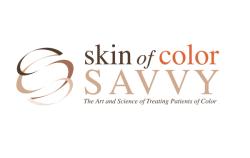
OR WAIT null SECS
A Randomized Trial of Enteral Glutamine for Treatment of Burn Injuries
Research from a double-blind trial suggests a lack of need for clinicians to implement glutamine therapy for burn victims.
A recent study found that using glutamine supplementation for patients with severe burns did not reduce hospital discharge times.
Severe burn injuries are associated with catabolism and intense inflammation which can lead to higher risks of infection, organ problems, and death. Various nutritional strategies have been investigated to treat burns, and there has been conflicting data regarding the efficacy of glutamine use.
There is strong interest in glutamine treatment research, as several observational studies have demonstrated that glutamine levels rapidly diminish after a severe burn, explained the investigators led by Daren K. Heyland, MD, and Lucy Wibbenmeyer, MD.
“A survey of 37 burn units worldwide showed that 47.7% of mechanically ventilated patients with burns received glutamine supplementation,” Heyland and colleagues wrote. “However, randomized, controlled trials involving other critically ill patient populations have suggested that glutamine administration may be ineffective or even harmful.”
Due to the conflicting evidence on glutamine supplementation, and to inform clinical recommendations regarding usage, the researchers decided to investigate further.
Research and Methods
The investigators conducted the Randomized Trial of Enteral Glutamine to Minimize the Effects of Burn Injury (RE- ENERGIZE) trial, a parallel-group, double-blind, randomized placebo study, to determine whether or not glutamine therapy would reduce mortality or be eliminated as a practice by health care workers and clinicians.
In total, 1200 burn patients from 14 countries were included in the randomized trial, from May 2011 through June 2021. The RE-ENERGIZE team recruited participants of various levels of injury, with patient recruitment criteria included the following:
- Aged 18 - 39 years, with burn injuries covering ≥20% of their total body surface area.
- Aged 18 - 39, with 15% of total body-surface area along with concomitant inhalation injury.
- Aged 40 - 59, with ≥15% of total body-surface area.
- Aged ≥60, with ≥10% of total body-surface area.
After receiving informed consent from 1200 burn patients included in the analysis, the investigators randomly assigned them 1:1 to either enteral glutamine or a placebo, each administered within 72 hours of their hospital admission. They gave the oral agents either 3 - 4 times daily until 7 days past the final skin grafting, or through a feeding tube every 4 hours.
Study Results
The investigators included 596 patients in the group given glutamine supplementation and 604 in the group given the placebo. They found that the median discharge time from the hospital was 38 days for the placebo arm and 40 for the glutamine arm. Their results did not differ when the data were adjusted according to either site or for covariates.
The subdistribution hazard ratios (HRs) for patients’ discharge alive were calculated, taking into account the competing risk of death. The subdistribution HR for discharge alive was 0.91 (95% CI, 0.80-1.04; P = .17).
Overall, the mortality rate by 6 months of hospitalization was 16.2% for the placebo group and 17.2% for the glutamine supplementation group, with the HR for death among treated patients being 1.06 (95% CI, 0.80-1.41).
The investigators primarily found no statistically significant differences between both arms of the clinical trial, with the one main exception being slightly elevated increases in urea levels for glutamine supplementation patients. Nevertheless, they observed no significant difference in the occurrence of renal-replacement therapy need or acute kidney injury between both groups.
“The strengths of this trial include its robust scientific methods and high-fidelity implementation, which enhance the internal validity of the findings,” they wrote. “The large number of diverse patients recruited across a large global network of burn units supports broad generalizability of the findings.”
This study, “A Randomized Trial of Enteral Glutamine for Treatment of Burn Injuries,” was published online by The New England Journal of Medicine.


